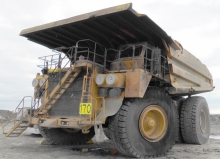MSHA’s analysis of recent accident data indicate that accidents involving customer and contract truck drivers, and managers and supervisors performing mining tasks represent a significant number of recent fatalities. MSHA has implemented an enhanced enforcement program to help improve…
Safety and Health Initiatives
The top priority at MSHA is keeping miners safe. This year we have seen an increase in fatalities and injuries, many of which could have been prevented with proper training and attention to tasks. It is up to mine operators to ensure that miners are fully trained and able to take time to follow…
MSHA is implementing a Silica Enforcement Initiative to protect Coal and Metal and Nonmetal (MNM) miners’ health by limiting their exposures to respirable crystalline silica. This initiative has four components: inspections, sampling, compliance assistance, and miners’ rights. …
At MSHA, we're committed to conducting inspections, investigating complaints, providing education and training, and collaborating with labor and mine operators to prevent accidents. While accidents are visible and draw attention to safety, identifying and addressing health hazards that cause…
Since October 2020, four massive pillar collapses have occurred in limestone mines. Each was accompanied by a powerful air blast and the formation of a large surface sinkhole. Fortunately they did not result in any injuries. Another massive pillar collapse occurred in 2015, and…
So far this year, thirteen miners have been killed and 341 have been injured in accidents involving powered haulage equipment such as shuttle cars, scoops, locomotives, front end loaders and more. Year to date, this is the highest number of powered haulage fatalities since 2022. The safety of…
In September 2018, three mobile equipment fires were reported in which fire suppression systems failed. One miner…

